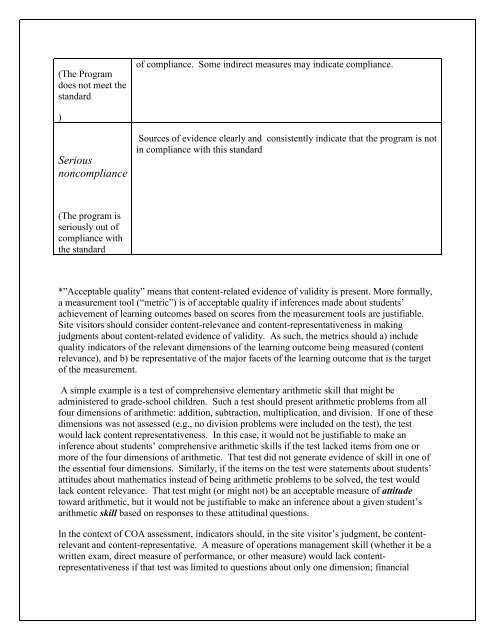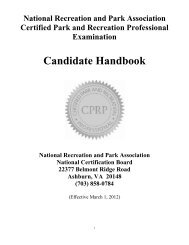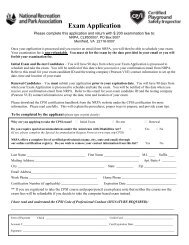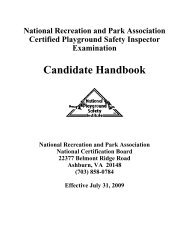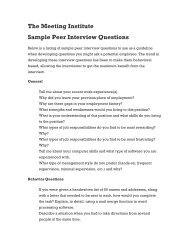Rating Scale for Evaluation Compliance with Learning Outcome ...
Rating Scale for Evaluation Compliance with Learning Outcome ...
Rating Scale for Evaluation Compliance with Learning Outcome ...
You also want an ePaper? Increase the reach of your titles
YUMPU automatically turns print PDFs into web optimized ePapers that Google loves.
(The Programdoes not meet thestandardof compliance. Some indirect measures may indicate compliance.)SeriousnoncomplianceSources of evidence clearly and consistently indicate that the program is notin compliance <strong>with</strong> this standard(The program isseriously out ofcompliance <strong>with</strong>the standard*”Acceptable quality” means that content-related evidence of validity is present. More <strong>for</strong>mally,a measurement tool (“metric”) is of acceptable quality if inferences made about students’achievement of learning outcomes based on scores from the measurement tools are justifiable.Site visitors should consider content-relevance and content-representativeness in makingjudgments about content-related evidence of validity. As such, the metrics should a) includequality indicators of the relevant dimensions of the learning outcome being measured (contentrelevance), and b) be representative of the major facets of the learning outcome that is the targetof the measurement.A simple example is a test of comprehensive elementary arithmetic skill that might beadministered to grade-school children. Such a test should present arithmetic problems from allfour dimensions of arithmetic: addition, subtraction, multiplication, and division. If one of thesedimensions was not assessed (e.g., no division problems were included on the test), the testwould lack content representativeness. In this case, it would not be justifiable to make aninference about students’ comprehensive arithmetic skills if the test lacked items from one ormore of the four dimensions of arithmetic. That test did not generate evidence of skill in one ofthe essential four dimensions. Similarly, if the items on the test were statements about students’attitudes about mathematics instead of being arithmetic problems to be solved, the test wouldlack content relevance. That test might (or might not) be an acceptable measure of attitudetoward arithmetic, but it would not be justifiable to make an inference about a given student’sarithmetic skill based on responses to these attitudinal questions.In the context of COA assessment, indicators should, in the site visitor’s judgment, be contentrelevantand content-representative. A measure of operations management skill (whether it be awritten exam, direct measure of per<strong>for</strong>mance, or other measure) would lack contentrepresentativenessif that test was limited to questions about only one dimension; financial


